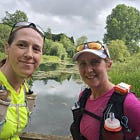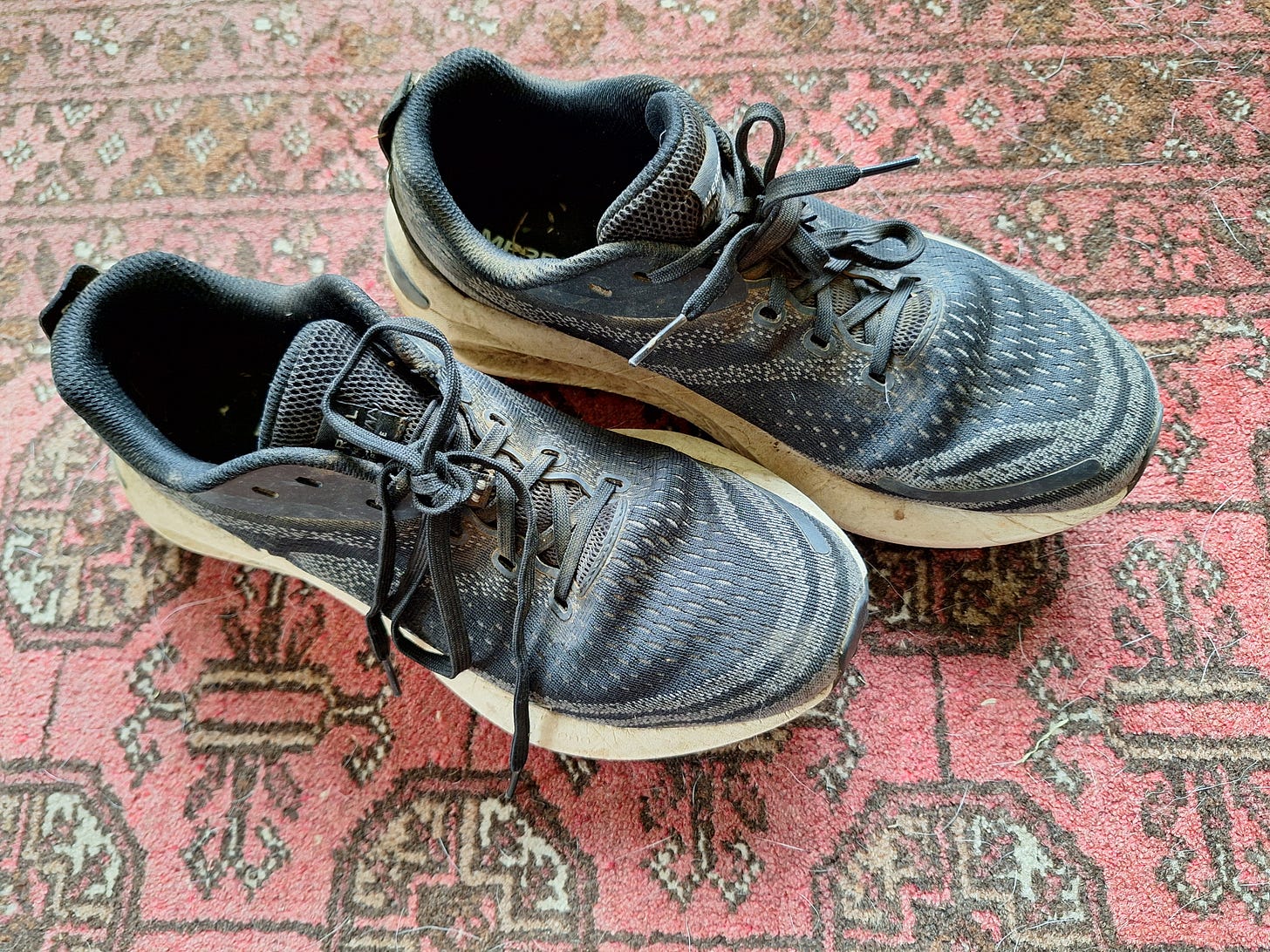I ran a 100km race last Saturday. And no I did not stop for lunch. When I tell people I run ultra marathons (anything longer than a marathon) I am bombarded with questions. Most of them are about food. Some of them are about running. My favourite query about the Foxton Hound Ultra 100k was if I would be stopping for a picnic.
But I get it. Ultra running is not normal. Many people understand parkrun, have contemplated a half marathon or have registered for the London Marathon ballot. But running all day (and possibly night) non-stop is not most runners’ cup of tea.
It wasn’t even on my radar seven years ago when I first started running. A 10k seemed impossible back then. And yet on Saturday I ran my longest continuous race - 108km (67 miles). It took me 14 hours 40 minutes and even more surprisingly I was first female.
Over the past few years I have realised that running is a mental game and you really can push yourself to extraordinary distances. In the world of ultra running a 100k race is not even very far. Some of them reach into hundreds of miles. The Self-Transcendence race is 3,100 miles over 52 days🤯.
Ultra running is really about preparation - mental, physical and logistical. I truly believe that if you are physically able to run 5k you can run an ultra marathon. You don’t have to be a fast runner, you just need good planning and lots of determination.
So I thought I’d share some of the things that helped me to cross the finish line at 9.40pm on Saturday evening.
Jeffing
Ultra running is often about hiking as much as it is about running. You don’t run 100k continuously. Even elite runners will fast hike certain sections of a course which are particularly steep or ‘unrunnable’. Mountainous racing involves a lot more hiking, usually with lightweight poles. In reality an ultra is a mixture of running and walking - known as Jeffing.
That being said, the Foxton Hound Ultra is through rolling countryside and with just 1,300 metres (4,200 feet) it is a relatively flat race in the world of ultra. I would estimate that I ran 85% of the route and walked the rest. The only time I walked was when going up a sustained hill or across a particularly gnarly field.
The running was at a pretty gentle pace throughout but when I got to a road section I sped up and tried to bag some time. You can’t really compare it to running a road half marathon. It’s a completely different beast. You run far slower and often have lots of conversations with other participants as you run.
Less is more
At the beginning of the year I got myself a coach. Last year I ran a 250km five day event and although it all went well I felt there was much I could learn about training. So I enlisted tea botherer / former Spine Race winner Damian Hall to coach me. What surprised me most was the low mileage on my plan. My peak week was 80km, compared to 150km the previous year. But there were more harder sessions in the plan. The emphasis shifted from quantity to quality.
I also finally embraced the gym and got into the habit of going twice a week (to do weights only). To my utter surprise I started to enjoy it and I definitely felt stronger for it. I was more likely to drop a run than a gym session if I was pushed for time. The gym session was shorter but felt like it gave me more benefit. Less is more became my mantra.
Test races
I wouldn’t advise anyone to leap straight into a 100km race on their ultra journey. It is wise to build up your distances.
In my training I did a 48-mile race about eight weeks out from the 100k, and I took this nice and slow. It was a great way to see where I was at and test out kit and nutrition. It was also a reminder that a trail race is never the distance that is advertised. The 48-miler is called the Hardwolds 40 but it was clearly not 40 miles. Similarly the Foxton 100km was actually 108km. You get used to this, I promise.
Nutrition
This is the biggie. Ultra running is an eating race, not a running race. Getting the fueling right is the most important thing. You won’t stop because your legs ache. You will stop because you have no energy or you will give up because your brain is not functioning properly. Coach Damo’s mantra is “low mood, eat food”. And it is so true. I really struggled at the 50-60km part of the race and it wasn’t until I tried all the food that my energy levels and mood picked up. I ate a bowl of pasta at the checkpoint, then on my way out I had a Veloforte bar, a peanut butter wrap and a large handful of boiled potatoes. None of it worked. I chewed a couple of salt tabs. I still felt rubbish. Time to bring out the emergency Mountain Fuel gel. Ten minutes later and I felt normal again.
I was surprised that the runners around me didn’t seem to be eating between the seven checkpoints but I made a conscious effort to eat little and often. I’m used to eating and running, because this is a skill you have to master as an ultra runner. I actually ate relatively less than on the 48-miler but I had carb-loaded more in the days before. I made sure to keep eating until the very end, having my last gel at around 103km. During the race I ate the following:
2 peanut butter wraps
3 Veloforte bars
2 Mountain Fuel flapjacks
400g boiled potatoes
1 Luchos square
1 donut
2 smalls bowls of pasta and tomato sauce (from the aid station)
3 crackers (from the aid station)
3 Mountain Fuel gels
Kit-tastic
This is the first ultra marathon where I felt like I had got all of my kit spot on. The biggest winners were my Adidas Rheon TechFit Control bra and my Merrell Morphlite road to trail shoes.
I have raved before about my Boobydoo bras but I must admit the Adidas bra surpassed these. I had absolutely no chafing from the bra. This is unheard of. The moisture seemed to wick away quickly and I stayed comfortable throughout the 14 hours. The bra isn’t even specifically designed for running, let alone ultra endurance running, but it was the perfect piece of kit for me.
Similarly the Morphlite were ideal for the mixture of terrain. The hybrid shoes had enough grip for grassy fields but comfy cushioning for long stretches of road. A trail shoe would have mashed my feet on the tarmac and a road shoe would have made me unsteady on the lumpy farm tracks. These were the perfect all rounder for a road and trail ultra and I didn’t get any blisters. Unfortunately seeds from the harvested fields did slip inside, rubbing the bottoms of my feet raw, meaning I now need to invest in some gaiters!
My cycling shorts, a bargain at £14 from TK Maxx, prevented any chafing and my dhb aerated tshirt (£15 from Wiggle) was as reliable as ever (you will see me wearing it in all my race photos). Coach Damo leant me his Petzl headtorch which was a godsend in the final hour. The only kit error was my ancient Garmin Fenix 5 watch which ran out of battery after 14 hours in navigation mode. Fortunately there was just 2.5km to go and I was running with another participant at this point, who guided me safety to the finish line in the dark.
I always worry about kit choice but I was really pleased with how everything panned out - I just need some gaiters and a watch with a longer battery! There is always something to learn from every race.
Strategy and mindset
Yes you have to put in the training. But ultra running is also largely about mindset. You have to want to do it, and want to finish it. You need your why. My why was simply to see if I could run 100k in one go. It is all part of the journey to see where my limits lie. I had been training for it all year and there was no way I was giving up. I didn’t want all my hard work to go to waste.
I went into the race wanting to finish it in under 15 hours, and if that was not possible I wanted to just finish it. But then my strategy changed. At the half way point I realised I was in the lead. I had been running for about seven hours and suddenly my goals shifted. I wanted to win. This has never happened before in a race and to be honest it was pretty stressful. Suddenly I wasn’t just running for me, I was running to stay ahead of others. This meant a lot of my usual practices went out the window. I took no photos. I ran every stretch of path I could, and hit the roads harder. I sent no in-race Instagram updates. I didn’t linger at checkpoints. I constantly looked over my shoulder. I didn’t listen to a single podcast, I didn’t even get my headphones out. As a result my average pace was quicker than the previous 48-miler and I got a 50k PB.
Although it put a different spin on the race it also showed me what I could achieve by being more focused and efficient. It revealed my competitive side and it showed that I could be flexible in a race. And that’s the key. Whatever your goal in an ultra marathon being adaptable is so important. It might mean changing your goals midrace or eating something you would never normally touch. But trust me, it will be worth it in the long run.
Thanks for reading this week’s newsletter. If you have any running news for me, let me know! Feel free to send feedback to lilycanter@yahoo.co.uk or suggest topics you’d like me to cover.






